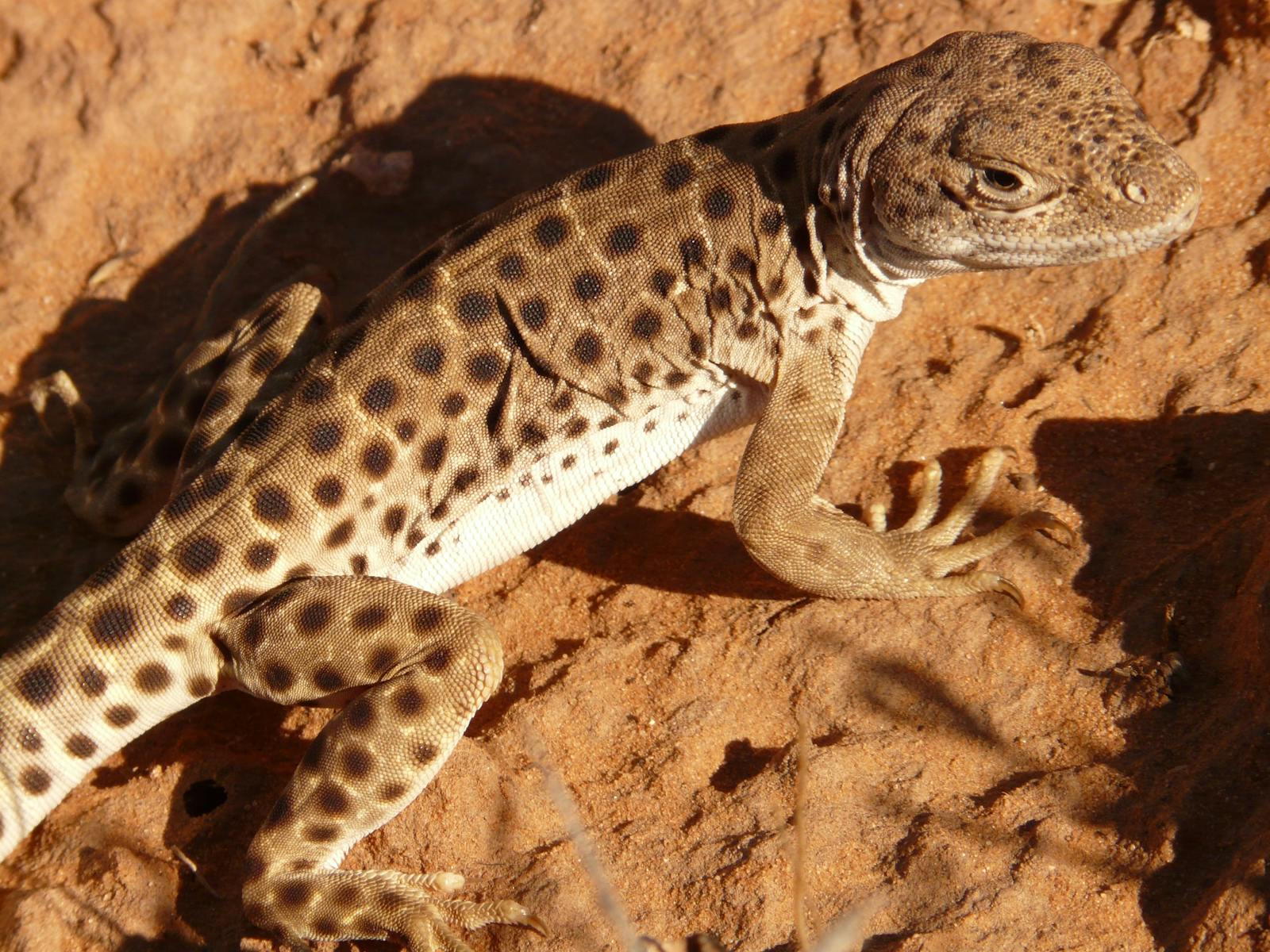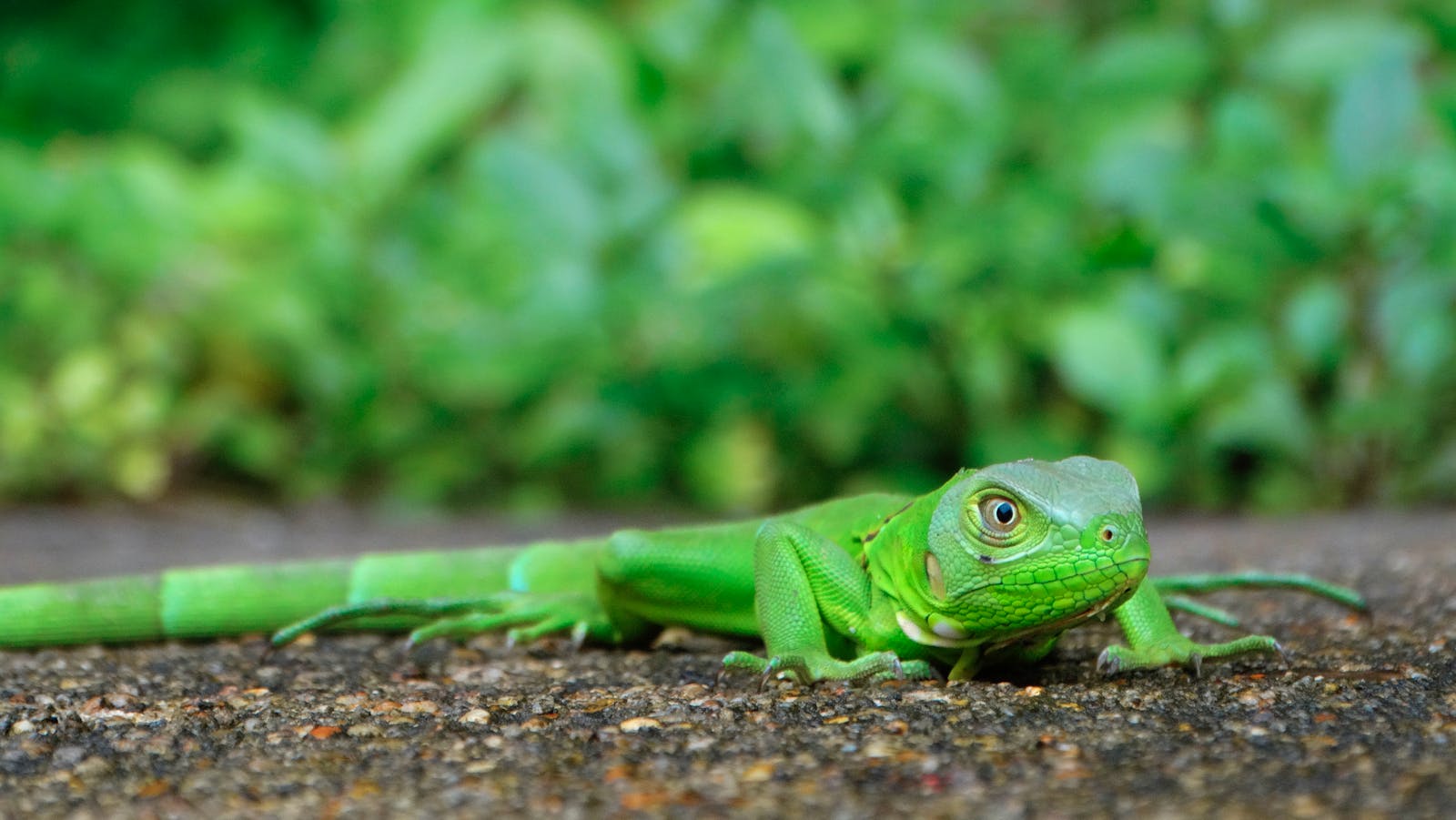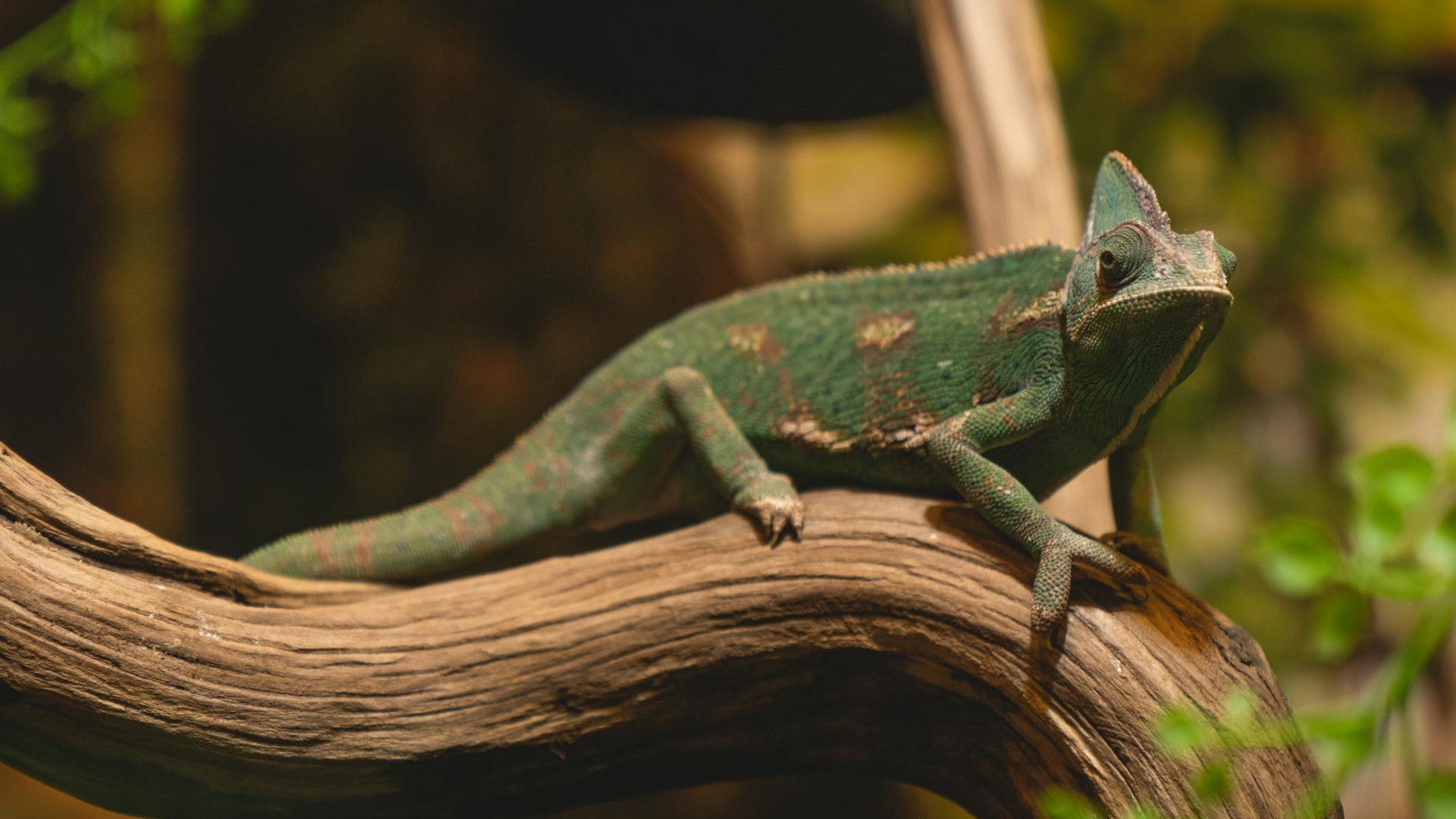In the harsh, unforgiving landscapes of Earth’s arid regions, where rainfall is scarce and water sources are few and far between, life has found extraordinary ways to persist. Among the most remarkable adaptations in the animal kingdom are those developed by certain lizard species that can survive without ever taking a drink of water. These remarkable reptiles have evolved sophisticated physiological and behavioral mechanisms that allow them to extract and conserve moisture in environments where other creatures would quickly perish from dehydration. From the sand-dwelling species of the Sahara to the rugged desert dwellers of Australia and the Americas, these lizards represent evolutionary ingenuity at its finest, showcasing nature’s remarkable ability to overcome seemingly insurmountable environmental challenges.
The Remarkable World of Water-Independent Lizards
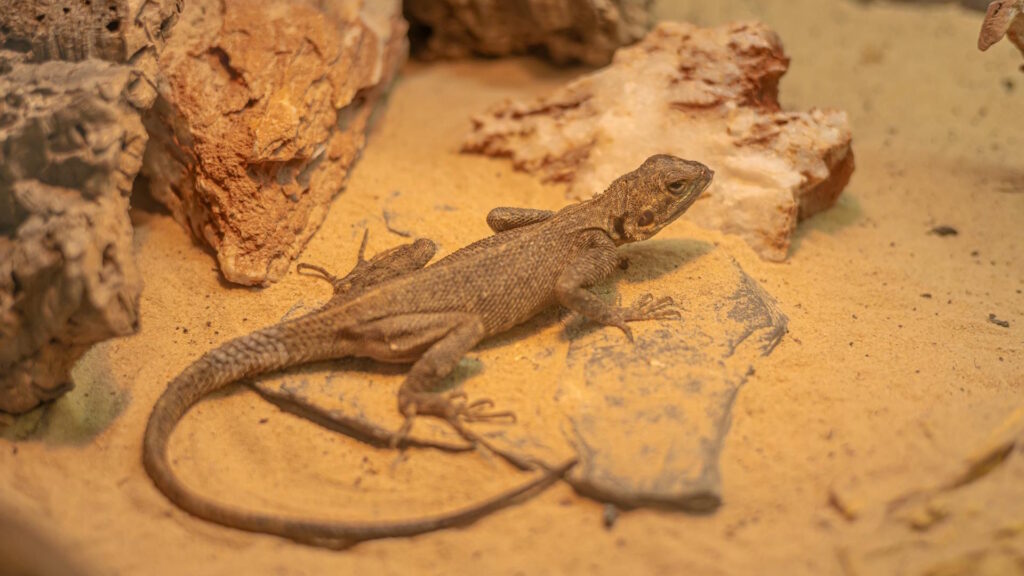
Desert lizards have evolved some of the most extraordinary adaptations in the animal kingdom, allowing them to thrive in environments where water is scarce or completely absent. These adaptations range from specialized skin structures that reduce water loss to unique metabolic pathways that maximize water conservation. Some species, like the thorny devil (Moloch horridus) of Australia and certain horned lizards of North America, have developed microscopic channels in their skin that can collect and transport even the smallest amounts of moisture directly to their mouths. Others rely on efficient excretory systems that produce highly concentrated urine and nearly dry fecal matter, minimizing water loss during waste elimination. These adaptations collectively represent millions of years of evolutionary refinement, allowing these remarkable creatures to colonize some of Earth’s most water-deprived environments.
Metabolic Water: Creating Moisture From Food
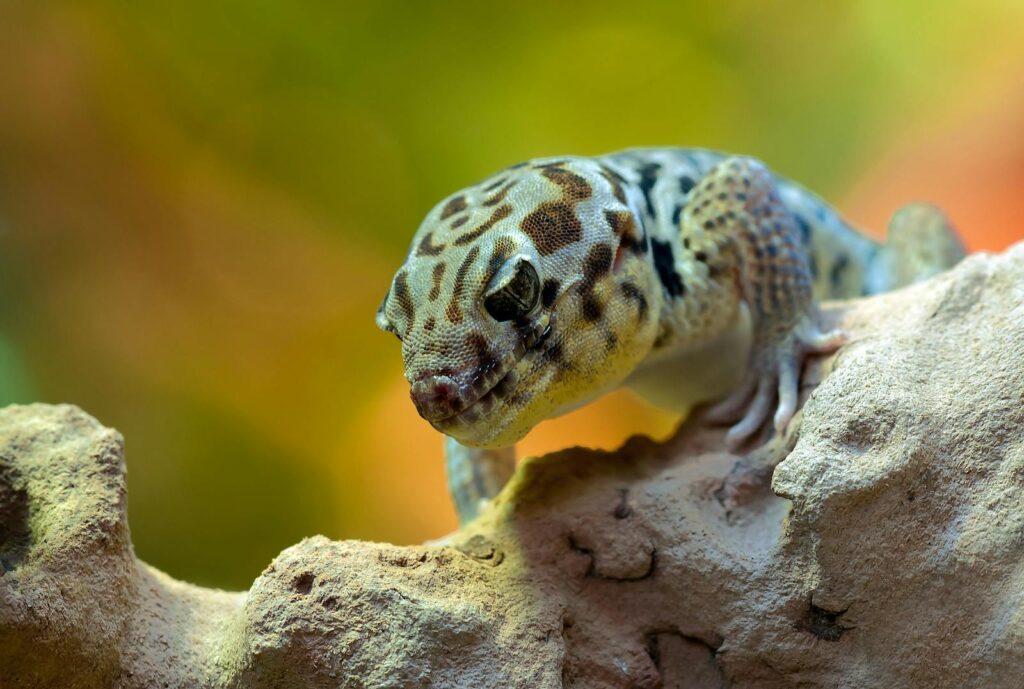
One of the most fascinating adaptations observed in desert-dwelling lizards is their ability to produce “metabolic water” through the breakdown of food. During the oxidation of carbohydrates, fats, and proteins in their diet, these lizards generate water as a byproduct of cellular respiration. Particularly efficient at this process are species that consume insects with high fat content, as fat metabolism produces significantly more water than carbohydrate or protein breakdown. For instance, the desert iguana (Dipsosaurus dorsalis) can derive up to 90% of its water needs through metabolic processes alone. This remarkable adaptation essentially allows these lizards to “create” water internally, reducing or eliminating their need to drink. The efficiency of this process varies among species, with some desert specialists capable of surviving their entire lives without ever taking a drink of water, relying solely on the moisture produced through metabolism and the water content of their food.
Specialized Skin Adaptations
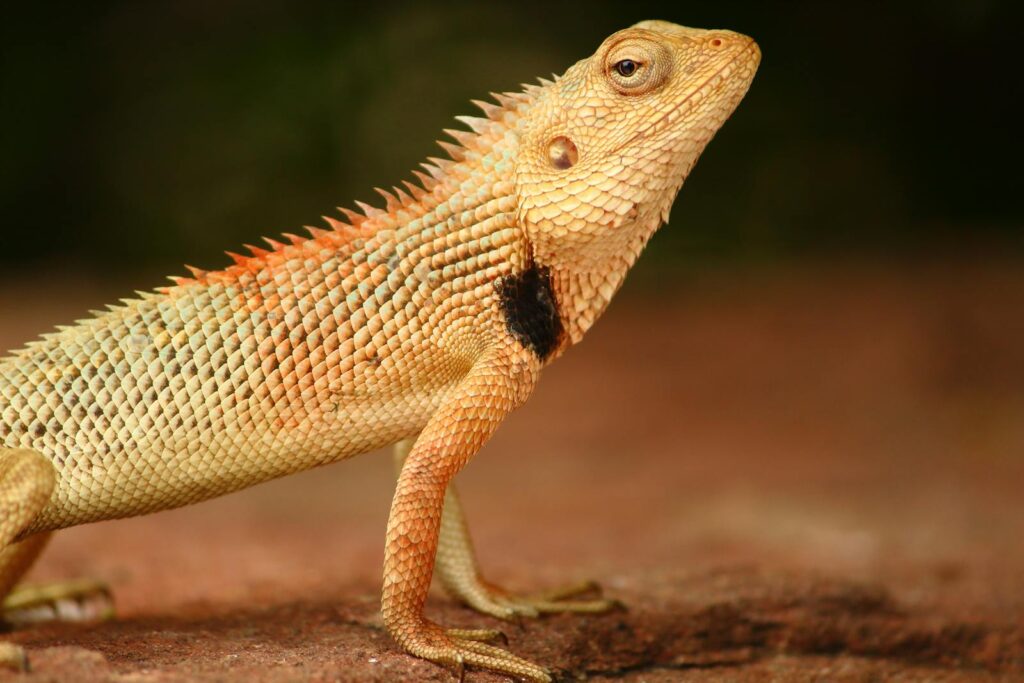
The skin of water-independent lizards has evolved remarkable adaptations that minimize transepidermal water loss, a critical survival advantage in arid environments. Unlike amphibians, which have permeable skin that readily loses moisture, desert lizards possess thick, keratinized scales that create an effective barrier against evaporation. Species like the desert-dwelling geckos have evolved scales with intricate nano-structures that increase water repellency and reduce surface area exposure to dry air. The skin of many desert species also contains specialized lipids that create an additional waterproofing layer, further reducing moisture loss through the epidermis. Some lizards, particularly those in extremely arid environments, have developed specialized regions of skin that can absorb minute amounts of moisture from the air or from brief contact with dew-coated surfaces, demonstrating the extraordinary lengths to which evolution has gone to solve the water scarcity problem.
The Remarkable Thorny Devil
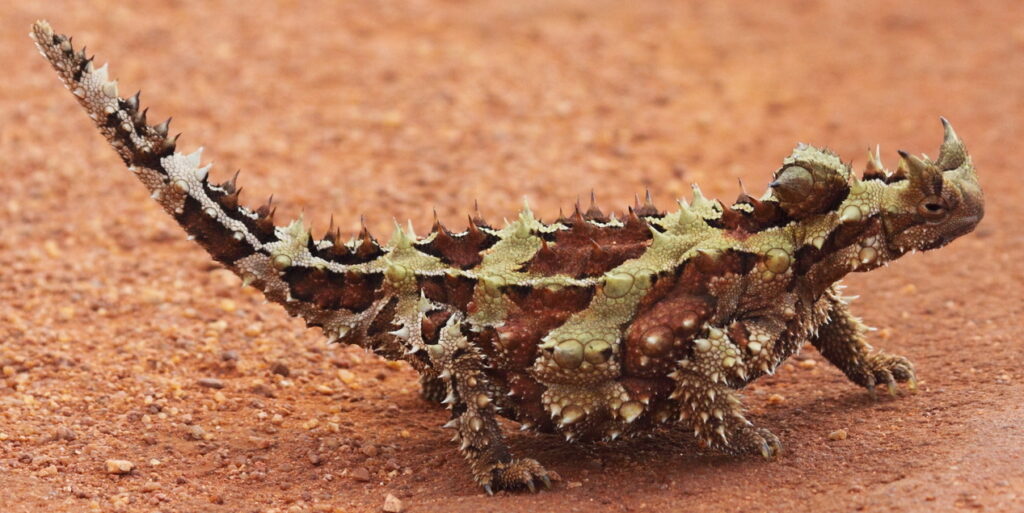
The thorny devil (Moloch horridus) of Australia represents perhaps the most extraordinary example of water-harvesting adaptation among lizards. This distinctive creature has evolved a complex system of microscopic channels between its scales that function through capillary action to transport water across its body surface. When any part of the lizard’s body encounters moisture—whether from morning dew, light rain, or even damp sand—these channels actively draw the water upward against gravity toward the corners of its mouth, where the lizard can ingest it. The entire body surface essentially functions as a water collection system, with the skin’s texture optimized to encourage condensation and water retention. Laboratory studies have shown that a thorny devil can absorb water through its feet when standing on damp sand, and even extract moisture from soil with water content as low as 1%. This remarkable adaptation allows the thorny devil to survive in Australia’s harshest deserts without ever needing to find standing water.
Water Extraction From Prey

For many desert lizards, their diet serves as the primary or sole source of water intake, necessitating specialized adaptations for maximizing moisture extraction from prey. Insectivorous desert species have developed highly efficient digestive systems that extract nearly every drop of water from their food before waste elimination. The desert iguana, for instance, possesses specialized intestinal structures that enhance water reabsorption during digestion, ensuring minimal moisture is lost through excretion. Some species deliberately select prey with higher water content during drier seasons, showing a remarkable ability to assess the hydration value of different food sources. Particularly fascinating is the ability of certain species to store water obtained from prey in specialized bladder-like structures, creating internal reservoirs they can draw upon during extended dry periods. These adaptations collectively transform each hunting success into not just a caloric victory but a critical water-harvesting opportunity.
Behavioral Strategies for Water Conservation
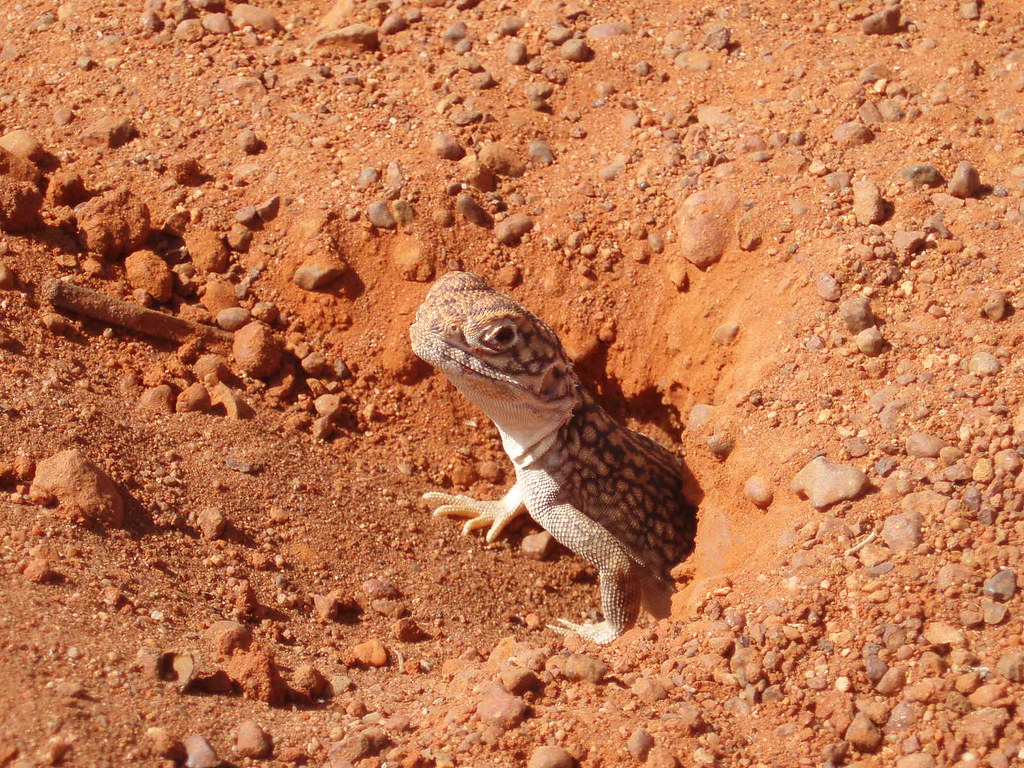
Beyond physiological adaptations, water-independent lizards employ sophisticated behavioral strategies to minimize water loss and optimize moisture retention in arid environments. Many species adopt a crepuscular or nocturnal lifestyle, becoming active during cooler periods when evaporative water loss is reduced, thus conserving precious body moisture. Burrowing behavior is common among desert lizards, who create underground retreats where humidity levels are higher and temperatures more stable than at the surface. During extreme heat or drought, some species enter a state of estivation—a summer equivalent of hibernation—during which metabolic rates decrease dramatically, reducing water requirements. Perhaps most impressive is the behavioral thermoregulation exhibited by many desert lizards, who precisely control their body temperature by shuttling between sun and shade, effectively managing their water economy by avoiding temperatures that would increase evaporative water loss. These behavioral adaptations work in concert with physiological mechanisms to create a comprehensive water conservation strategy.
Efficient Excretory Systems

The excretory systems of water-independent lizards represent extraordinary examples of evolutionary adaptation to water scarcity. Unlike mammals, which lose significant water through urine, desert lizards have developed specialized kidneys capable of producing highly concentrated urine with minimal water content. The desert iguana, for example, can produce urine approximately twice as concentrated as human urine, significantly reducing water loss during waste elimination. Additionally, desert lizards excrete nitrogenous waste primarily as uric acid rather than urea, a adaptation that requires substantially less water. This uric acid is expelled as a semi-solid white paste along with feces, conserving precious moisture that would otherwise be lost. Some species have also developed specialized structures in their cloaca—the common chamber for reproductive, digestive and urinary systems—that can reabsorb additional water from waste before elimination, further enhancing water conservation efficiency.
Harvesting Morning Dew
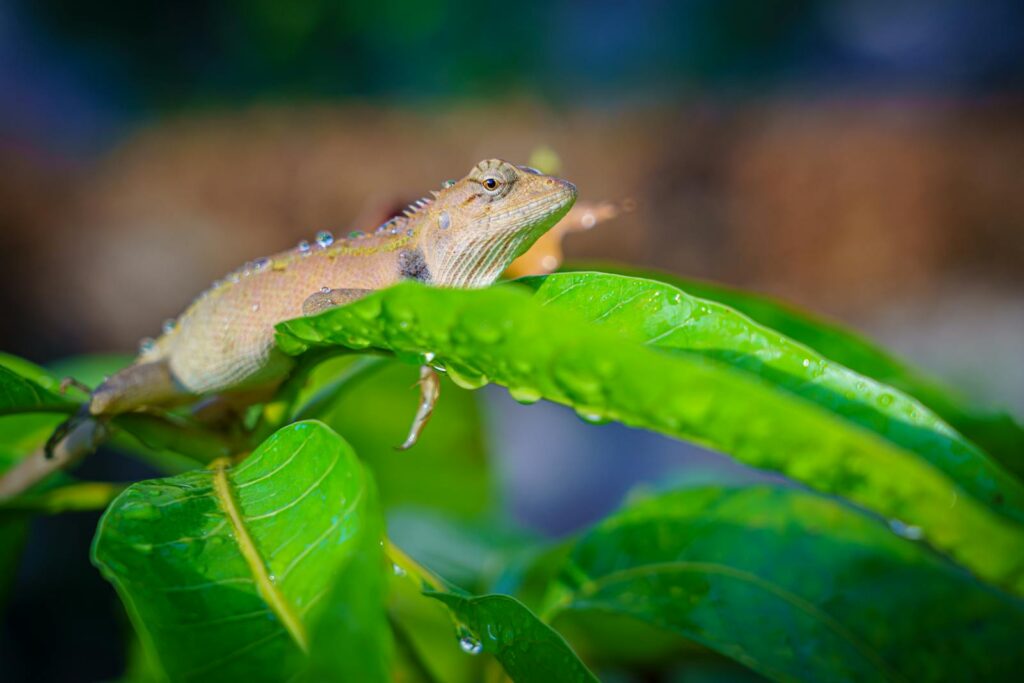
Some water-independent lizards have developed remarkable strategies for harvesting morning dew, capturing this ephemeral water source before it evaporates with the rising sun. Species like the Namib Desert’s shovel-snouted lizard (Meroles anchietae) perform a distinctive morning “dance,” pressing their bodies against dew-covered rocks and vegetation, allowing moisture to be absorbed through specialized regions of their skin. The Texas horned lizard (Phrynosoma cornutum) possesses a network of tiny channels between its scales that can capture dew through capillary action, directing it toward the mouth. In particularly arid regions, some lizards have been observed positioning themselves to intercept fog or dew that forms during the night, maximizing their exposure to these limited moisture sources. These behaviors demonstrate how even in the harshest deserts, lizards can exploit microhabitats and transient water sources that might seem insignificant but prove crucial for survival in water-scarce environments.
The Gila Monster’s Water Storage Adaptation

The Gila monster (Heloderma suspectum), native to the southwestern United States and northwestern Mexico, demonstrates one of the most remarkable water storage adaptations among lizards. Unlike most reptiles, this venomous species possesses a specialized bladder that can store significant quantities of water, functioning as an internal reservoir during drought periods. After drinking or consuming moisture-rich prey, the Gila monster’s bladder can expand to hold approximately one-third of the lizard’s total body weight in water. This stored water is gradually reabsorbed into the bloodstream as needed, allowing the lizard to survive months without additional water intake. Complementing this adaptation, the Gila monster also stores energy in its fatty tail, which contains specialized fat deposits that produce metabolic water when broken down during periods of food scarcity. These combined adaptations allow the Gila monster to remain inactive in its burrow during extreme drought conditions, emerging only when environmental conditions improve.
Physiological Dormancy During Extreme Drought
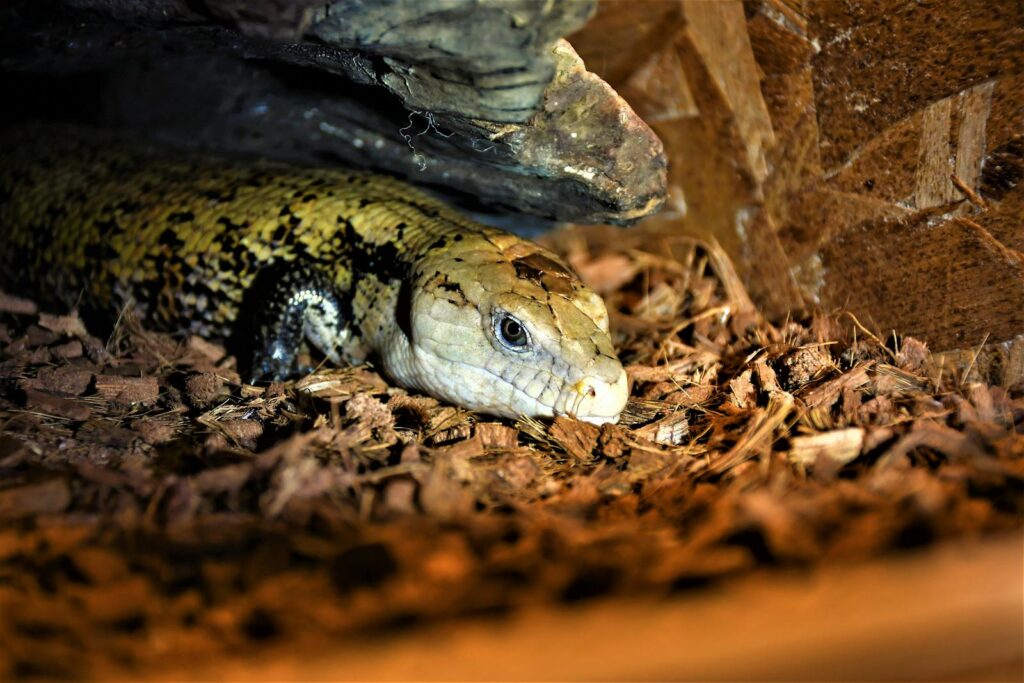
When faced with extreme drought conditions that challenge even their advanced water conservation adaptations, some desert lizards enter states of physiological dormancy that dramatically reduce their water requirements. Species like the desert spiny lizard (Sceloporus magister) can enter a state of estivation during which their metabolic rate decreases by up to 70%, significantly reducing water loss through respiration and other physiological processes. During these dormant periods, the lizards often retreat to deep burrows where humidity levels remain relatively stable and temperatures fluctuate less extremely than at the surface. Some species can remain in this state for months, essentially “waiting out” severe drought conditions while subsisting on internal energy reserves. Particularly fascinating is the ability of certain lizards to detect subtle environmental cues signaling the onset of rain, allowing them to emerge from dormancy precisely when water becomes available again, maximizing their chances of hydration and successful foraging.
Tolerance to Dehydration
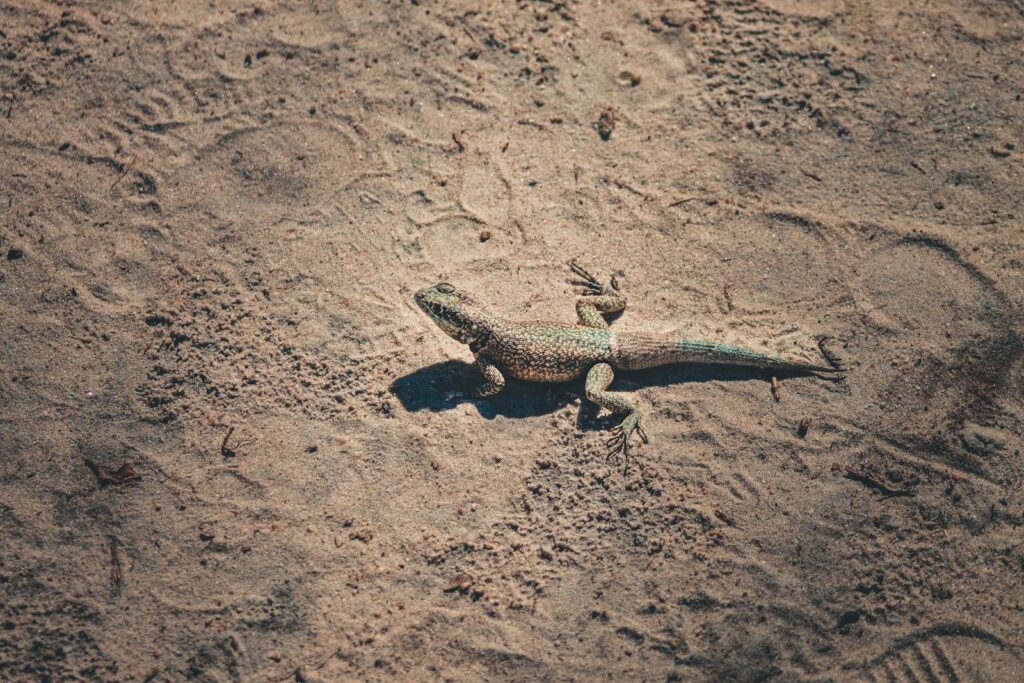
Beyond their water conservation and acquisition adaptations, many desert lizards have developed an extraordinary physiological tolerance to dehydration that exceeds that of most vertebrates. While a human might experience serious health complications after losing 10-15% of body water, certain desert lizards can survive losing up to 30-40% of their total body water, an adaptation that provides critical survival time during extreme drought conditions. This dehydration tolerance involves specialized cellular mechanisms that protect tissues from damage even when body fluids become highly concentrated. Species like the desert iguana maintain normal physiological functions despite significant water deficit through adaptations in their blood chemistry that prevent protein denaturation and cellular damage. These lizards can also rapidly rehydrate when water becomes available, absorbing moisture at rates that would cause dangerous electrolyte imbalances in other animals. This exceptional dehydration tolerance essentially provides desert lizards with an additional safety margin during extended dry periods, complementing their water conservation adaptations.
Climate Change Challenges for Water-Independent Lizards
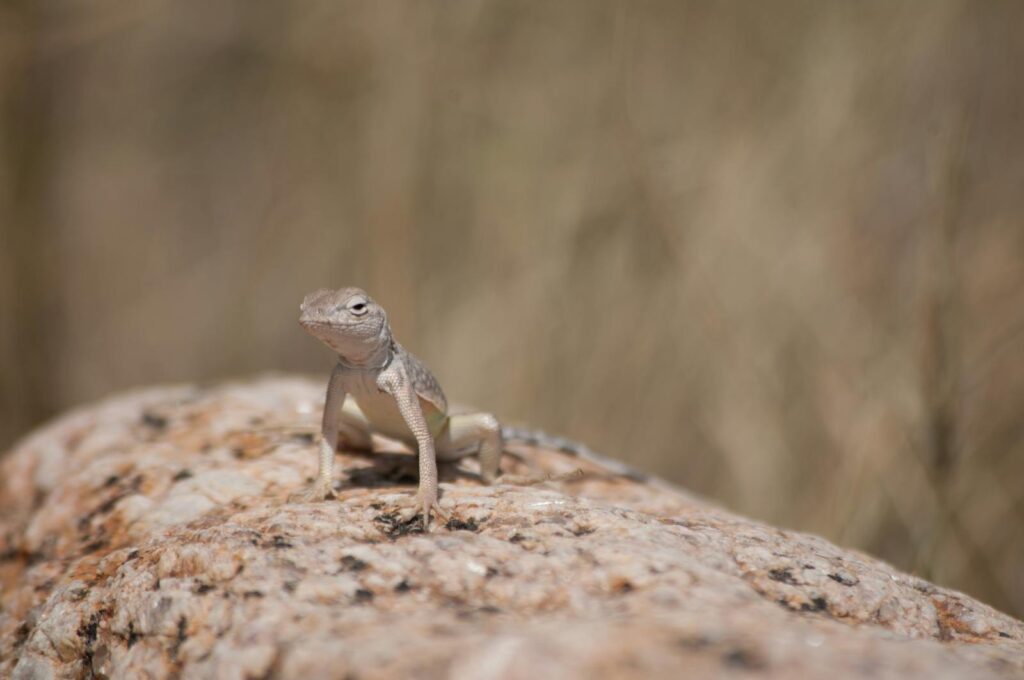
Despite their remarkable adaptations for water independence, many desert lizard species now face unprecedented challenges due to accelerating climate change. As arid regions experience increasingly extreme temperature fluctuations and prolonged drought periods, even the most well-adapted species may approach or exceed their physiological limits. Research indicates that some desert lizards are already experiencing reduced activity periods as daily temperature maximums exceed their thermal tolerance thresholds, limiting feeding opportunities and potentially affecting reproductive success. Habitat fragmentation compounds these challenges by restricting lizards’ ability to relocate to more favorable microhabitats or track shifting climate conditions. Particularly concerning is the potential disruption of the delicate timing of life cycle events, such as reproduction, which often depend on specific environmental cues that may become less reliable in changing climates. Conservation efforts for these remarkable water-independent species increasingly focus on identifying and protecting climate refugia—areas where environmental conditions might remain suitable despite broader regional changes—to ensure the survival of these evolutionary marvels.
Lessons from Water-Independent Lizards
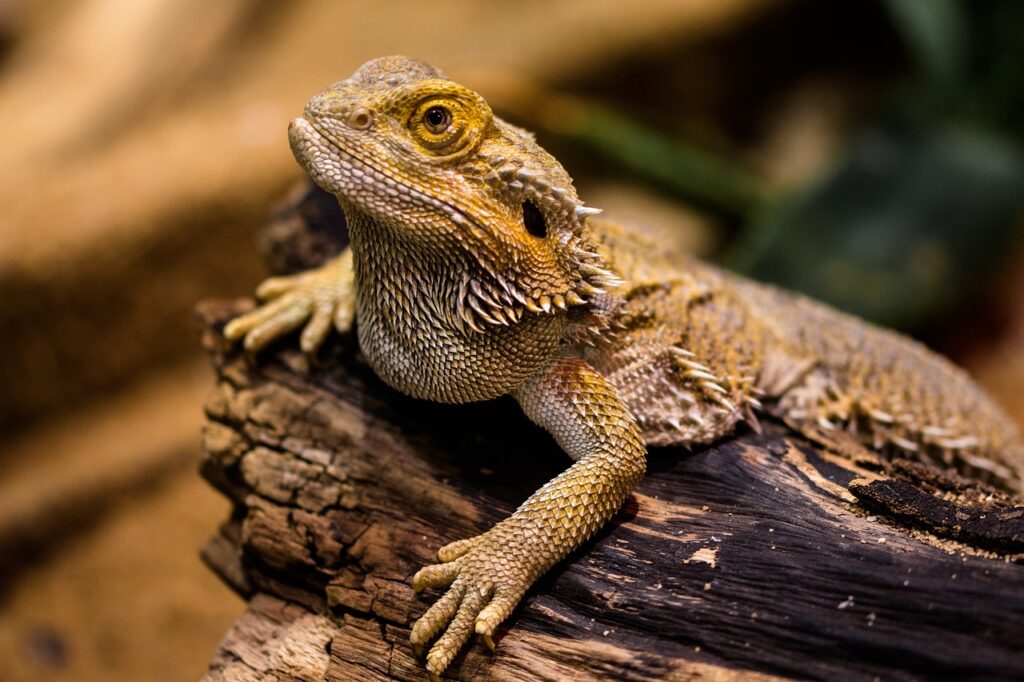
The extraordinary adaptations of water-independent lizards offer valuable insights for human applications, particularly in fields related to water conservation and survival in arid environments. Biomimetic research has already drawn inspiration from the thorny devil’s water-harvesting skin to develop passive water collection systems for deployment in water-scarce regions. The efficient excretory systems of desert lizards have informed research into more water-efficient waste processing technologies that could reduce water consumption in human applications. From a conservation perspective, understanding how these species survive without drinking water provides crucial information for protecting desert ecosystems as climate patterns shift. Perhaps most profoundly, these remarkable adaptations remind us of life’s extraordinary resilience and adaptability, demonstrating how evolutionary processes have solved seemingly insurmountable environmental challenges through incremental adaptations over millions of years. As water scarcity becomes an increasingly pressing global issue, the lessons offered by these specialized reptiles may prove more valuable than ever before.
Conclusion
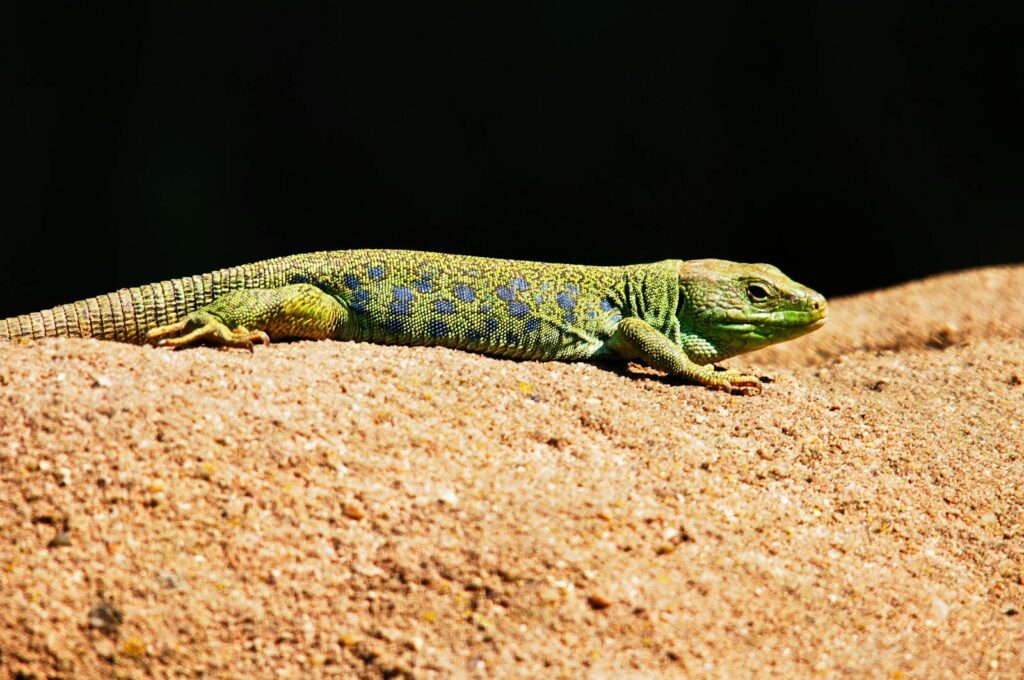
The extraordinary ability of certain lizard species to survive without drinking water represents one of nature’s most impressive adaptations to environmental extremes. Through a remarkable combination of specialized physiological mechanisms, behavioral strategies, and anatomical features, these reptiles have conquered some of Earth’s most water-deprived landscapes. From the water-harvesting skin of the thorny devil to the efficient metabolic pathways of the desert iguana, these adaptations showcase the power of evolutionary processes to develop solutions to seemingly insurmountable environmental challenges. As climate change continues to alter global water availability patterns, understanding these adaptations becomes increasingly valuable, both for conservation efforts and for potential biomimetic applications in human technology. These remarkable lizards stand as living testaments to life’s extraordinary resilience and ingenuity, flourishing in environments where the absence of water would seemingly make survival impossible.

